Have you ever wondered if you can use carpet cleaner on upholstery? In this article, we will explore the similarities and differences between carpet cleaner and upholstery, as well as discuss the benefits and risks of using carpet cleaner on different types of upholstery. We will also provide you with tips on how to properly use carpet cleaner on upholstery to ensure the best results. Whether you have leather, microfiber, velvet, silk, or cotton upholstery, we've got you covered!
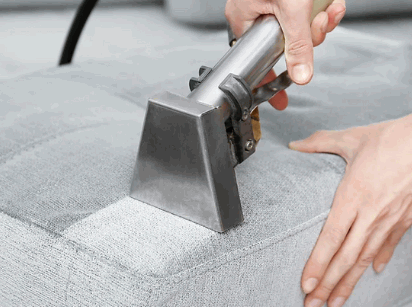
Can Carpet Cleaner Be Used On Upholstery?
A carpet cleaner can sometimes be used on upholstery, depending on the type of fabric and the cleaner being used.
When considering the compatibility of carpet cleaner with upholstery, it is crucial to assess the fabric type to avoid any damage. For instance, a mild carpet cleaner can often be suitable for cleaning certain types of upholstery, such as synthetic fabrics or microfiber.
Spot treatment is particularly important when dealing with stains on upholstery, as it helps prevent them from setting in too deeply. Deep cleaning with a carpet cleaner can be highly effective for removing embedded dirt and grime from multi-surface upholstery, providing a thorough and rejuvenating clean.
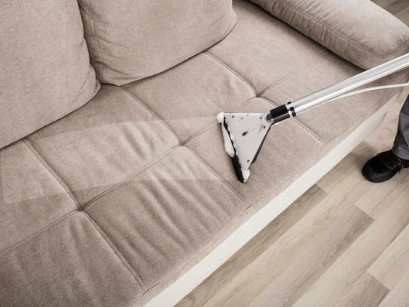
What Is A Carpet Cleaner?
A carpet cleaner is a specialized cleaning solution designed to remove stains, dirt, and debris from carpets and rugs.
It plays a key role in maintaining the hygiene of carpets by eliminating allergens and bacteria trapped within the fibers.
Various cleaning solutions, such as foam, powder, or liquid concentrates, are used in conjunction with carpet cleaners to address different types of spills and dirt.
Tools like carpet shampoo and extractors are particularly effective for deep cleaning tasks, as they penetrate the carpets thoroughly to lift embedded grime and moisture.
Regular use of carpet cleaners not only enhances the appearance of the carpets but also prolongs their lifespan by preventing mold growth and odors.
Learn more: How To Keep Rugs Clean With Pets
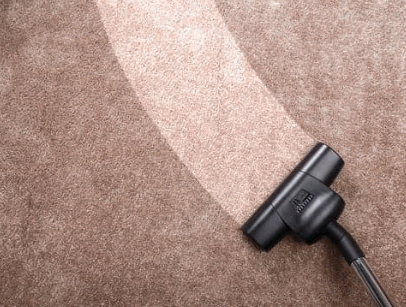
What Is Upholstery?
Upholstery refers to the fabric or textile covering used on furniture such as sofas, chairs, and cushions.
It plays a significant role in not only enhancing the aesthetic appeal of furniture but also providing comfort and functionality. Various types of fabrics are commonly used in upholstery, ranging from durable and stain-resistant options like microfiber and leather to more luxurious choices such as velvet and silk.
Proper maintenance of upholstery is essential to ensure its longevity and quality. Regular cleaning, vacuuming, and treating stains promptly are key practices to uphold the fabric's appearance and integrity. Investing in fabric protection treatments can help safeguard upholstery from spills, stains, and wear, prolonging its lifespan.
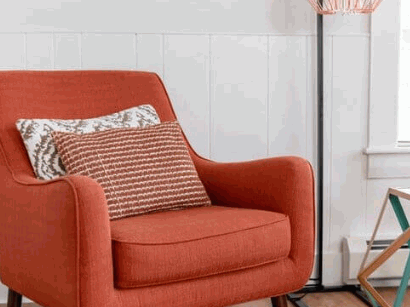
What Are The Similarities Between Carpet Cleaner And Upholstery?
Carpet cleaners and upholstery share similarities in terms of cleaning processes, stain removal techniques, maintenance requirements, and spot treatment solutions.
Both these cleaning tasks often benefit from regular vacuuming to remove dirt and debris before deep cleaning. They can be treated with similar stain removal products to tackle common spills and spots. It is vital to follow manufacturer guidelines for both carpet and upholstery care to ensure longevity and optimal cleanliness. Both settings may require professional cleaning services periodically to maintain peak conditions and extend their lifespan. By adopting proactive maintenance practices, both carpet and upholstery can stay fresh and durable for years to come.
What Are The Differences Between Carpet Cleaner And Upholstery?
While both carpet cleaner and upholstery cleaning involve removing dirt and debris, they differ in terms of tools used, specific cleaning agents, and techniques tailored to each surface.
Upholstery cleaning often requires the use of specialized upholstery brushes designed to effectively clean delicate fabrics without causing damage like traditional carpet brushes might. Specific upholstery cleaning agents are formulated to be gentle on fabrics while still powerful enough to remove stains.
When it comes to techniques, upholstery cleaning entails more precision due to the variety of fabrics used in furniture compared to the standard carpet materials. The meticulous approach is crucial to maintain the appearance and longevity of upholstery surfaces.
Can Carpet Cleaner Be Used On All Types Of Upholstery?
The applicability of carpet cleaner on different types of upholstery varies based on fabric composition, stain removal requirements, and the need for fabric protection.
When dealing with delicate fabrics such as silk or velvet, it is crucial to exercise caution when using a carpet cleaner to avoid damaging the material. For these fabrics, it is advisable to opt for gentle cleaning solutions and perform a spot test in an inconspicuous area before proceeding.
On the other hand, sturdy fabrics like synthetic blends or cotton can usually withstand more robust cleaning techniques. Regular maintenance, including vacuuming and occasional deep cleaning, is essential to preserve the appearance and longevity of upholstery regardless of the fabric type.
Leather Upholstery
Leather upholstery requires specific care and cleaning methods to maintain its quality and appearance over time.
- Regular dusting of leather upholstery is crucial to prevent dirt and grime build-up. When cleaning, opt for a specialized upholstery cleaner designed for leather surfaces to avoid damaging the material.
- Gentle circular motions with a soft, damp cloth can effectively remove surface dirt without causing scratches. Conditioning the leather with a suitable leather conditioner helps keep it supple and prevents cracking.
- Investing in a fabric protection product specifically formulated for leather can provide an extra layer of defense against spills and stains, prolonging the life of your leather furniture.
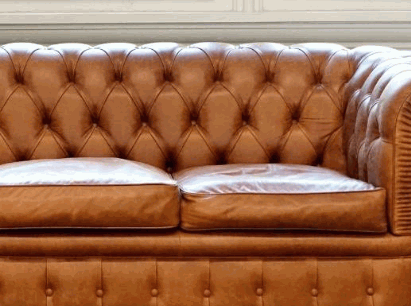
Microfiber Upholstery
Microfiber upholstery is known for its durability and stain resistance, requiring gentle cleaning methods and maintenance tips for long-term upkeep.
To effectively clean microfiber upholstery, begin by gently vacuuming the surface with a soft brush attachment to remove dirt and debris. For tougher stains, mix a small amount of mild detergent with water and using a soft cloth, lightly blot the affected area. It is crucial to avoid using harsh chemicals or abrasive materials that can damage the delicate fibers.
Regularly fluff and brush the upholstery to maintain its softness and prevent matting. Employing proactive maintenance strategies such as using armrest covers and rotating cushions can help distribute wear and tear evenly across the furniture, extending its lifespan.
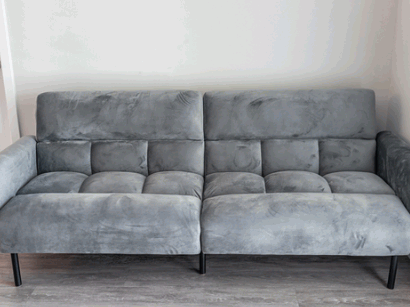
Velvet Upholstery
Velvet upholstery demands careful cleaning to avoid damage to the delicate fabric texture, necessitating stain removal methods and fabric protection measures.
Maintaining velvet upholstery involves adopting specific cleaning techniques to ensure the material's softness and luxurious appearance are preserved. Stains on velvet can be particularly challenging to remove due to the fabric's dense pile, requiring gentle yet effective cleaning solutions. It is crucial to address spills promptly to prevent them from setting in and causing long-term damage.
Regular vacuuming with a soft brush attachment can help keep dust and debris at bay, while spot cleaning with a damp cloth and mild detergent can tackle minor stains without compromising the integrity of the velvet.
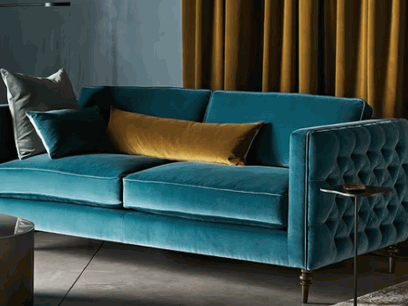
Silk Upholstery
Silk upholstery demands meticulous cleaning procedures due to its delicate nature, requiring specialized cleaners and fabric protection methods for optimal maintenance.
Utilizing a pH-neutral upholstery cleaner specifically designed for delicate fabrics is crucial when dealing with silk upholstery. Avoid harsh chemicals or abrasives that can damage the fibers. Consider applying a fabric protector to create a barrier against spills and stains.
Regularly vacuuming your silk upholstery with a brush attachment can help prevent dust and dirt buildup. Remember to rotate cushions regularly to ensure even wear and maintain the fabric's integrity.
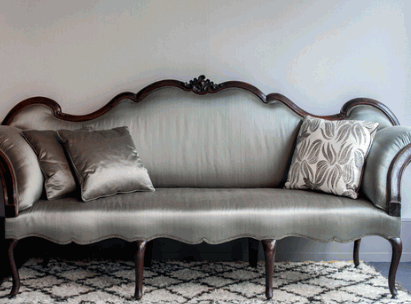
Cotton Upholstery
Cotton upholstery is versatile and easy to clean, benefiting from regular maintenance, spot treatment solutions, and appropriate fabric care practices.
To maintain the pristine condition of cotton upholstery, it is essential to vacuum the fabric regularly to remove dust and debris. This not only helps in preserving the appearance of the upholstery but also prevents dirt from settling deep into the fibers.
Gentle upholstery cleaners specifically designed for cotton fabrics should be used periodically to remove any accumulated soil and to refresh the fabric. For spot treatment, it is advisable to address spills and stains promptly using mild solutions to avoid setting the stains.
Rotating and flipping cushions can help distribute wear and maintain the shape of the upholstery.
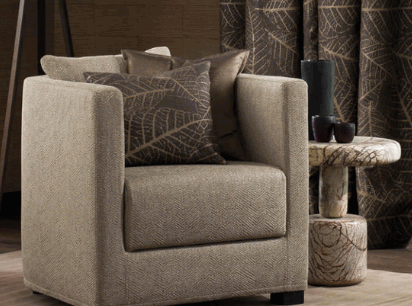
What Are The Benefits Of Using Carpet Cleaner On Upholstery?
Using carpet cleaner on upholstery offers several benefits, including cost-effectiveness, ease of use, effective stain removal, and the ability to act as a deodorizer.
Carpet cleaner provides a versatile solution for maintaining the cleanliness and freshness of your upholstery, making it a cost-efficient choice compared to professional cleaning services. Its user-friendly application methods make it accessible for homeowners looking to tackle stains and spills on their own. With its potent stain removal capabilities, carpet cleaner effectively tackles tough stains, ensuring that your upholstered surfaces look refreshed and renewed. The deodorizing properties of carpet cleaner leave a pleasant scent behind, enhancing the overall ambiance of your living spaces.
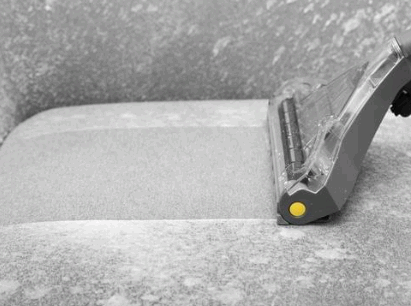
Cost-effective
One of the key benefits of using carpet cleaner on upholstery is its cost-effectiveness, providing an affordable cleaning solution for maintaining fabric quality.
Carpet cleaners are highly efficient in removing tough stains, ensuring that your upholstery looks fresh and new. By investing in a quality carpet cleaning solution, you can extend the lifespan of your upholstery, ultimately saving you money on frequent replacements. The value proposition of incorporating carpet cleaning into your fabric maintenance routine lies in its ability to not only clean but also protect and preserve the fabric, making it a wise long-term investment for your home or business.
Easy To Use
Carpet cleaner designed for upholstery is user-friendly and convenient, offering simplicity in deep cleaning and spot treatment applications.
The user-friendly nature of these upholstery carpet cleaners makes them ideal for quick and hassle-free fabric maintenance. With simple controls and lightweight designs, they are easy to maneuver and operate, even for beginners. These cleaners provide effective deep cleaning procedures that can effortlessly remove dirt, stains, and odors from upholstery. Their spot-cleaning capabilities are highly efficient, allowing users to target specific areas with precision and achieve professional-quality results without the need for professional help.
Removes Tough Stains
Carpet cleaner excels in removing tough stains from upholstery, offering effective spot treatment solutions and comprehensive stain removal capabilities.
Its powerful formula penetrates deep into the fabric, breaking down the toughest of stains with ease. With just a few sprays and gentle scrubbing, the carpet cleaner can transform a heavily soiled couch into a spotless piece of furniture. The ability to rejuvenate fabric surfaces by eliminating stubborn blemishes makes it a must-have tool for households dealing with everyday spills and accidents. Whether it's a wine spill or a pet stain, the carpet cleaner proves time and again its efficiency in restoring upholstery to its original pristine condition.
Can Be Used As A Deodorizer
A carpet cleaner can serve as a deodorizer for upholstery, effectively eliminating odors and freshening up fabric surfaces.
By utilizing carpet cleaner on upholstery, not only can unpleasant smells be eradicated, but the fabric textures also receive a rejuvenating boost. The cleansing properties of the carpet cleaner work to penetrate deep into the fibers of the upholstery, ensuring a thorough removal of any lingering odors.
This process not only sanitizes the fabric but also leaves behind a subtle, pleasing fragrance that enhances the overall ambiance of the room. Upholstered furniture can benefit greatly from this simple yet effective method of refreshing and maintaining cleanliness.
What Are The Risks Of Using Carpet Cleaner On Upholstery?
While using carpet cleaner on upholstery offers benefits, there are potential risks such as discoloration, fabric damage, and residue buildup that need to be considered.
Discoloration, for instance, can occur when the chemicals in the carpet cleaner react unfavorably with the fabrics of the upholstery, leading to unsightly stains or patches. Fabric damage is another concern, as certain upholstery materials may be sensitive to the strong cleaning agents commonly found in carpet cleaners, resulting in tears, fraying, or weakening of the fibers. The residue left behind after cleaning can attract dirt and grime more easily, diminishing the overall appearance and cleanliness of the upholstered surfaces.
Discoloration
One of the risks of using carpet cleaner on upholstery is the potential for discoloration, especially if the cleaning solution is not suitable for the fabric type.
This risk can be amplified when dealing with different materials like silk, velvet, or wool, where specific care instructions are crucial. To prevent discoloration, it's essential to test the cleaning solution on a hidden area of the upholstery first to ensure compatibility. Using gentle blotting techniques for stain removal rather than aggressive rubbing can help avoid spreading the stain or causing color changes. Incorporating fabric protection measures, such as applying a fabric guard after cleaning, can further safeguard against discoloration and help maintain the upholstery's appearance.
Damage To Fabric
Using carpet cleaner inappropriately on upholstery can lead to fabric damage, necessitating caution during deep cleaning sessions and adherence to maintenance tips.
To avoid potential harm to fabric materials, it's crucial to opt for gentle cleaning practices when treating upholstery. Upholstery fabrics are often more delicate than carpets, requiring a softer touch during cleaning. Always test a small, inconspicuous area first to ensure compatibility with the cleaner. Remember to consult the manufacturer's instructions for specific maintenance guidelines. Taking these precautions can help prevent unnecessary damage and prolong the lifespan of your upholstery.
Residue Buildup
Residue buildup from carpet cleaner on upholstery can occur if excess cleaning agents or water-based solutions are not adequately rinsed, impacting fabric texture and cleanliness.
This accumulation of cleaning products can lead to a sticky, stiff feeling on the upholstery surface, diminishing its softness and comfort. Leftover residue can attract dirt and dust particles more easily, resulting in a quicker re-soiling of the fabric. To avoid these issues, it is crucial to thoroughly rinse the upholstery after cleaning. Opting for water-based cleaning solutions can help prevent residue buildup, ensuring your upholstery remains clean, fresh, and free from any unwanted residue.
How To Properly Use Carpet Cleaner On Upholstery?
Properly using a carpet cleaner on upholstery involves following specific instructions, conducting spot treatments, using the right amount of cleaner, and ensuring thorough rinsing.
Adhering to the manufacturer's guidelines is crucial when applying carpet cleaner on upholstery as it ensures that the cleaning process is effective and safe.
Spot treatments are particularly essential for tackling stubborn stains or heavily soiled areas on the upholstery, requiring attention to detail and patience.
Accurately measuring the quantity of cleaner needed prevents wastage and helps achieve optimum cleaning results.
Thorough rinsing after cleaning is a key step to remove any residue and prevent potential damage to the upholstery fabric.
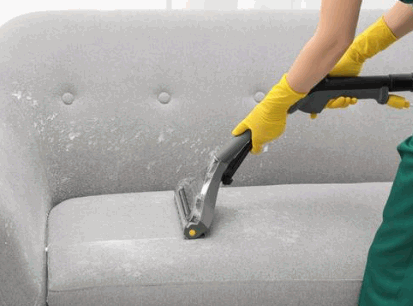
Read The Instructions
Before using carpet cleaner on upholstery, it is crucial to carefully read and follow the manufacturer's instructions to ensure proper application and effective cleaning.
These instructions provide essential details on the specific application techniques, dosage recommendations, and safety precautions you need to consider for optimal cleaning results. Understanding the correct way to use the carpet cleaner can make a significant difference in the final outcome. Proper dosing ensures that the cleaning solution is neither too weak to be ineffective nor too strong that it damages the upholstery. Safety precautions outlined in the manual are crucial to protect both you and the furniture being cleaned, emphasizing the importance of ventilation, protective gear, and proper handling.
Test On A Small Area
Prior to full application, it is advisable to test the carpet cleaner on a small, inconspicuous area of the upholstery to ensure compatibility and avoid potential damage.
This step, known as a patch test, is essential in preventing any adverse reactions on the larger surface. To conduct a spot test, apply a small amount of the carpet cleaner on a hidden part of the upholstery using a clean cloth or sponge. Allow the solution to sit for the recommended time, then blot it gently with a clean white cloth. Monitor the fabric for any signs of color fading, texture alteration, or other adverse reactions. If there are no negative effects after a specified period, proceed with confidence to clean the entire upholstery.
Use The Right Amount Of Cleaner
Applying the correct amount of carpet cleaner on upholstery is essential for effective cleaning results, ensuring thorough maintenance and preserving fabric integrity.
Using too little cleaner might not provide the required cleaning power, leaving dirt and stains behind. On the other hand, excessive cleaning can lead to residue buildup, damaging the fabric's texture and color. Striking the right balance is crucial to ensure that the upholstery is not only cleaned effectively but also remains in top condition. By following dosage guidelines and understanding the specific requirements of different fabrics, one can achieve optimal cleaning outcomes while safeguarding the longevity of the upholstery."
Rinse Thoroughly
Thorough rinsing after applying carpet cleaner on upholstery is crucial to remove residue, dirt particles, and cleaning agents, ensuring a clean and refreshed fabric surface.
During the rinsing process, it is essential to use clean water and a gentle cloth or sponge to thoroughly cleanse the upholstery. By doing so, you can effectively eliminate any leftover cleaning solution or grime that may linger on the fabric. This meticulous approach not only enhances the appearance of the upholstery but also plays a vital role in maintaining its longevity and durability. Proper rinsing ensures that the fabric is completely free from any potential irritants or residues, creating a healthier and more pleasant environment in your living space.
